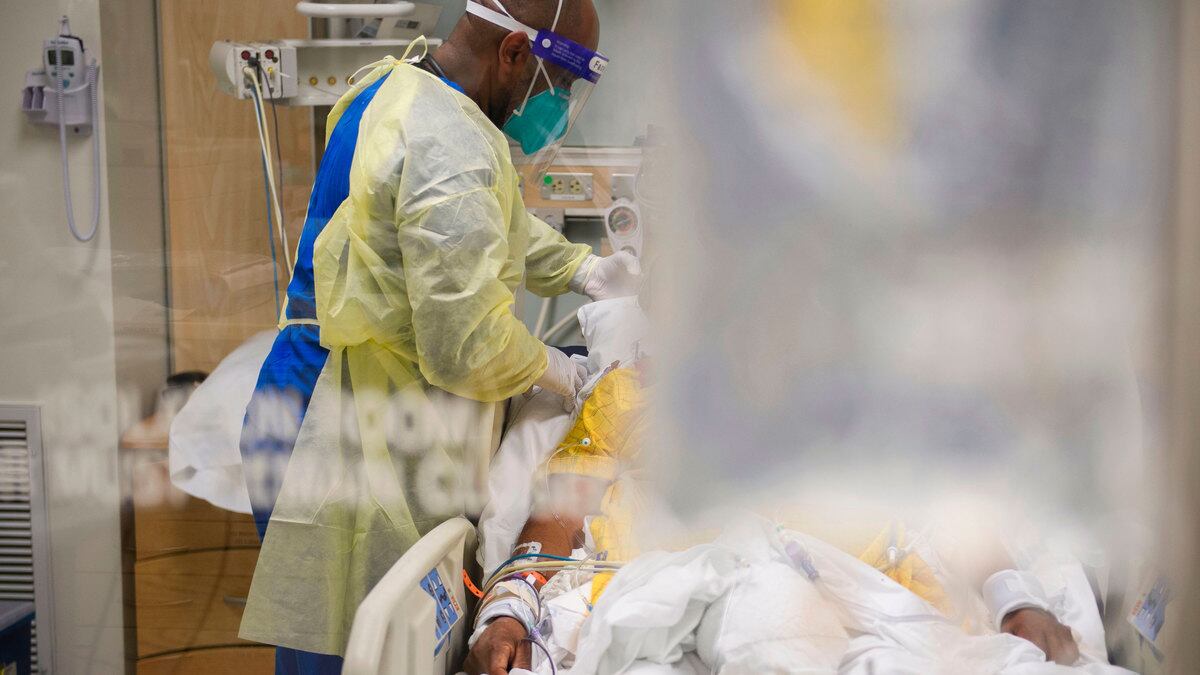Of the over 200 million recorded survivors of SARS-CoV-2 infection, many millions suffered in an ICU for weeks and months before being discharged. Their return home, often the result of cutting-edge medical care, is cause for celebration. And yet many of these patients are now living with massive and likely life-long disabilities that include dementia-like cognitive impairment, PTSD, depression, and muscle and nerve disease.
This devastating form of Long COVID fits under the medical umbrella of something called Post-Intensive Care Syndrome (PICS), a near-invisible epidemic of cognitive and physical impairment that often follows an extended ICU stay. These two entities, Long COVID and PICS, have many overlapping forms of suffering that must be acknowledged by health-care professionals and loved one for survivors to feel validated and heard.
People throughout society in all our communities are now struggling with new disabilities following COVID-19 that are due to both the disease itself and the unintended side effects of ICU management. Over the past 25 years, we in critical care learned that many of our standard treatment protocols—including sedating and immobilizing patients and hooking them up to ventilators for days and weeks at a time—caused patients long-term harm even while bringing them back from the brink of death. Over time our research ushered in a safer way to care for patients, one that woke them up and got them moving, brought family to their bedsides, and kept delirium at bay. With our new best practices, patients improved and were discharged faster and had fewer lingering symptoms. Then COVID-19 undid nearly all our progress overnight. Now, in many hospitals around the U.S., we have returned to relying on prolonged sedation and immobilization, making it overtly clear once again that the ICU can damage lives as much as it can save them.
Pre-COVID in the United States alone, over 6 million people were admitted to an ICU each year. That number is now even higher, and with COVID surges from the Delta variant continuing worldwide and hospitals busy with patients whose illnesses were allowed to progress unchecked during the pandemic, it is likely that many more people will need ICU care sooner than expected. One of them could be you—or a loved one. As a critical care physician and scientist of 30 years, I know that the treatment you receive will directly impact the rest of your life, and it is imperative that you learn the best ways to advocate for yourself and your family members. Let me tell you how.
If you are sitting next to a family member on life support, introduce yourself to the medical team as they “round.” Let them know you would like to be involved and inquire (when you see the opportunity) as to how closely the team plans to follow the six well-validated steps of the most widely known ICU safety checklist—referred to as the A2F (ABCDEF) Bundle. It will provide structure and guidance for you during a chaotic time and help your loved one to receive the best treatment.
Here is what you can expect from this checklist:
1. A - Assessment and management of adequate pain control with the least dangerous medicines. Your goal is not only to keep your family member out of pain but also to minimize the risks posed by overuse of medications like narcotics. Sometimes doctors and nurses err on the side of giving too much, and while prudent in some circumstances, it can be detrimental in others.
2. B - Both an attempt to remove sedatives and the ventilator itself. Sedatives enable your family member to endure the ventilator, and the machine itself buys time to allow her lungs to recover by pumping oxygen through her body and breathing for her. However, it is best to remove both as soon as possible and your family member should be awoken daily to have her sedatives and ventilator needs assessed. Once awake, she will feel more human, be able to make eye contact with you and the medical team, and communicate by writing on a white board to let you know her needs, all of which, when combined with fewer sedatives, reduces the risk of death, reduces delirium, and hopefully results in a lower risk of new-onset dementia a year later.
3. C - Choose medications wisely. For example, we need to avoid certain classes of dangerous medications like benzodiazepines whenever possible. Research clearly shows that use of benzodiazepines as a sedative is associated with the development of delirium, which in turn raises the risk of post-ICU dementia. Shorter acting sedatives like propofol and dexmedetomidine are generally much safer for your loved one. Be sure to speak up. Unfortunately, use of benzodiazepines skyrocketed during COVID-19, setting us back about 20 years in our practice habits.
4. D - Delirium assessment and management. Many ICU patients develop delirium, a kind of brain injury that will present as confused thinking and can be associated with death or ICU-acquired dementia months and years later. Just being with your loved one at the bedside, interacting, talking, and telling stories can go a long way toward lessening—or preventing—the onset and duration of delirium. Try to ground your family member with his favorite music, family photos, a familiar blanket. Make sure there’s a way for him to tell day from night by adjusting light and noise levels accordingly (and have nurses turn that TV off at night!). Ensure he has eyeglasses, hearing aids, or dentures as necessary to allow him to feel more like himself. Remind him that he is a person with a life beyond the ICU.
5. E - Early mobilization out of bed with encouragement from nurses and both physical and occupational therapists. Your image of an ICU patient may be of someone in a coma surrounded by beeping machines. While this may be the case for your family member in the first couple of days after admission, it is important for you to ask when it will be safe to try getting her out of bed and walking—the sooner the better—even while she is attached to a ventilator. Getting active again, even a little, lessens muscle wasting, decreases delirium, and allows your loved one to be involved in her own treatment. This step is much more likely to happen if you push for it.
6. F - Family involvement in medical rounds. This crucial factor ensures that you know what is going on medically and that you have time to talk on behalf of the patient. Remember that information flows both ways between you and the medical team. They can better care for your family member if they know who he is as a person—not just as a diagnosis—and what matters to him in terms of life goals and spiritual values.
My peers and I have proven through large scientific investigations conducted around the world in tens of thousands of patients that higher compliance by medical teams with these safety steps on a daily basis yields a greater likelihood of leaving the ICU and hospital sooner, avoiding a nursing home, and suffering less brain dysfunction—which translates into a better long-term recovery. We learned from studying 15,000 ICU patients that when a hospital team’s completion of these steps is 80 percent, for example, patients do much better than when the compliance is only 40 percent. As with any checklist, it only works when you use it. We want pilots to adhere to the flight safety checklist when we are traveling from Los Angeles to New York, right? This is no different, and I’m hoping this message will empower us all to expect the best from one another at the bedside.
The last letter in the bundle, F for Family, has been an especially contentious aspect of COVID-19 care. Early in the pandemic, we studied 2,088 ICU COVID-19 patients from around the world and learned that less than 15 percent of this large cohort of patients had any communication to a loved one (virtual or in person) during their ICU stay. Patients were isolated and alone without anyone they knew at their side, and it left them dying of loneliness. Carolyn Rogers, a COVID-19 survivor from Tennessee, told me that one day she was so desperate for human touch and connection that she sobbed asking her nurse, “Would you please just lower your mask for a moment. I have to see a human smile, or I can’t go on any longer.”
An ICU stay is a fraught time for patients and families, and it may seem impossible to involve yourself in your own or a loved one’s medical care. However, becoming an active participant in key decisions during critical illness can stave off silent but deadly new disabilities (PTSD, depression, cognitive impairment, and physical weakness) that multiply exponentially after even a few days. We need you to be part of our medical team to remind us that every patient is more than a beating heart or breathing lungs to be saved. This patient is a whole person—your person—whose mind, body, and spirit is at stake. We have the tools to care for each patient in the best way possible, and those tools include your presence, your knowledge, and even your insistence in pushing us to combine humanity and compassion within our modern technological world. Your advocacy at the bedside is a stalwart force toward avoiding unintentional harm and accelerating both the patient’s and family’s long-term healing and recovery. In the throes of this ongoing pandemic, your presence has never been more important than right now.
E. Wesley Ely is the author of Every Deep-Drawn Breath: A Critical Care Doctor on Healing, Recovery, and Transforming Medicine in the ICU.






